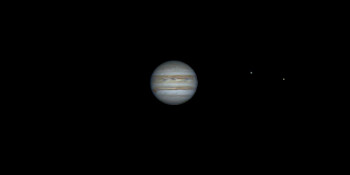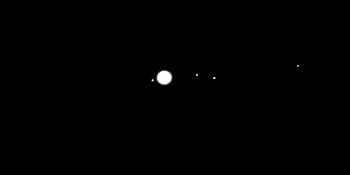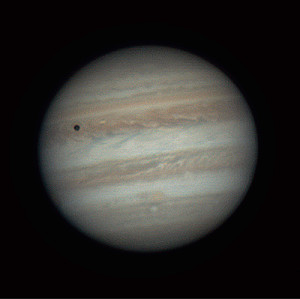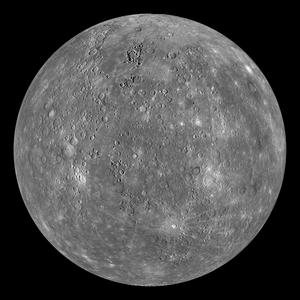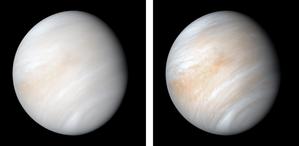Glossary term: Planète
Description: L'Union astronomique internationale définit une planète comme un corps céleste en orbite autour d'une étoile ou d'un vestige d'étoile, qui est suffisamment grand pour être presque sphérique par sa propre force gravitationnelle, mais pas assez massif pour que la fusion thermonucléaire se produise au sein de son noyau. Il doit également être suffisamment massif pour que sa gravité élimine les autres objets qui passent à proximité de son orbite autour de l'étoile. Ce sont donc des corps froids (par rapport aux étoiles) qui ne brillent dans la bande visible que par la lumière réfléchie de leur étoile, mais qui émettent de la lumière dans les longueurs d'onde infrarouges. Dans notre système solaire, huit planètes gravitent autour du Soleil. Les planètes peuvent être essentiellement rocheuses, comme les planètes internes (Mercure, Vénus, Terre et Mars), ou essentiellement liquides et gazeuses avec un petit noyau solide, comme les planètes externes (Jupiter, Saturne, Uranus et Neptune). Les planètes situées en dehors du système solaire sont appelées planètes extrasolaires ou exoplanètes.
Related Terms:
- Terre
- Exoplanète
- Géantes gazeuses
- Giant Planet
- Géante de glace
- Union astronomique internationale
- Jupiter
- Mars
- Mercure
- Neptune
- Fusion nucléaire
- Planètes extérieures
- Saturne
- Système solaire
- Planète tellurique
- Uranus
- Vénus
See this term in other languages
Term and definition status: The original definition of this term in English have been approved by a research astronomer and a teacher The translation of this term and its definition have been approved by an astronomer and a teacher
The OAE Multilingual Glossary is a project of the IAU Office of Astronomy for Education (OAE) in collaboration with the IAU Office of Astronomy Outreach (OAO). The terms and definitions were chosen, written and reviewed by a collective effort from the OAE, the OAE Centers and Nodes, the OAE National Astronomy Education Coordinators (NAECs) and other volunteers. You can find a full list of credits here. All glossary terms and their definitions are released under a Creative Commons CC BY-4.0 license and should be credited to "IAU OAE".
If you notice a factual or translation error in this glossary term or definition then please get in touch.
Related Media
Jupiter's Rotation, by Vishal Sharma, India
Credit: Vishal Sharma/IAU OAE
License: CC-BY-4.0 Creative Commons Attribution 4.0 International (CC BY 4.0) icons
Jupiter Moons Movie2, by Nicolas Hurez, Paul-Antoine Matrangolo, and Carl Pennypacker, United States of America
Credit: Nicolas Hurez, Paul-Antoine Matrangolo and Carl Pennypacker/IAU OAE
License: CC-BY-4.0 Creative Commons Attribution 4.0 International (CC BY 4.0) icons
Jupiter, Io and its shadow, by Ralf Burkart, Germany
Credit: Ralf Burkart/IAU OAE
License: CC-BY-4.0 Creative Commons Attribution 4.0 International (CC BY 4.0) icons
Mercure
Credit: NASA/Johns Hopkins University Applied Physics Laboratory/Carnegie Institution of Washington credit link
License: PD Public Domain icons
Vénus en lumière visible
Credit: NASA/JPL-Caltech credit link
License: PD Public Domain icons
Related Activities
Design Your Alien
astroEDU educational activity (links to astroEDU website) Description: Design an alien life form suited for an extra-terrestrial world.
License: CC-BY-4.0 Creative Commons Attribution 4.0 International (CC BY 4.0) icons
Tags:
Life
, Environment
, Extra-terrestrial
, Art
, Creativity
, Hands-on
, Alien
Age Ranges:
8-10
, 10-12
Education Level:
Primary
, Secondary
